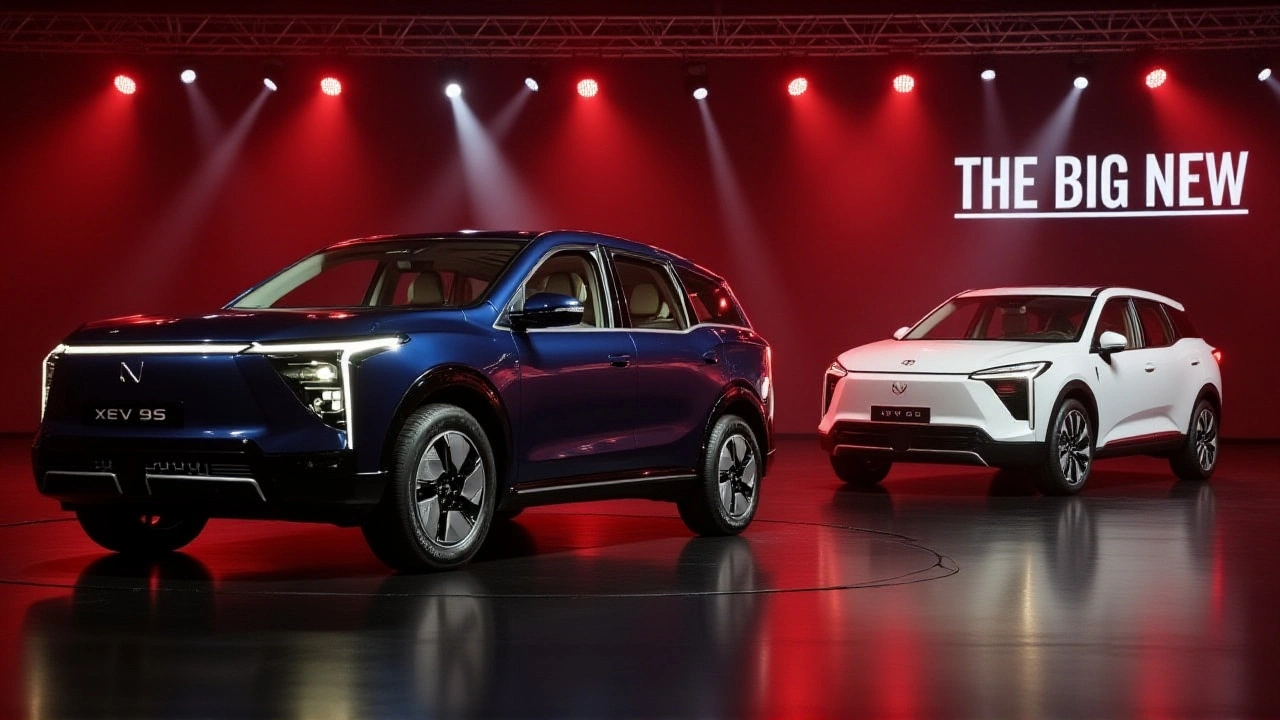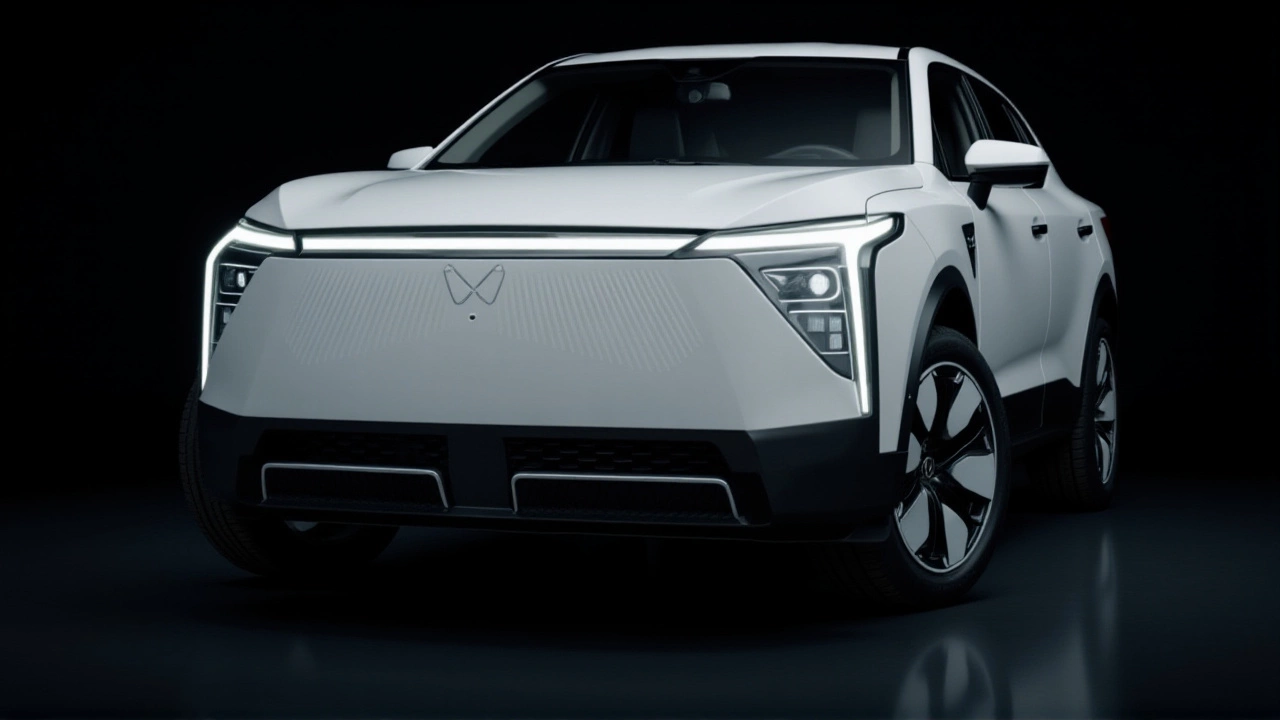When Mahindra & Mahindra Limited unveiled the Mahindra XEV 9S in late 2025, it didn’t just add another electric SUV to its lineup—it rewrote the rules for Indian families. Priced from ₹19.95 lakh ex-showroom, this seven-seater is the first mass-market EV in India built from the ground up as an electric vehicle, not a converted ICE model. With deliveries starting January 23, 2026, and bookings opening January 14, 2026, Mahindra is betting big that Indian buyers are ready to trade gas-guzzling three-row SUVs for a quiet, tech-loaded, zero-emission alternative. And the numbers suggest they might be right.
India’s First Authentic Electric 7-Seater
The Mahindra XEV 9S isn’t a retrofit. It rides on Mahindra’s proprietary INGLO architecture, designed specifically for electric powertrains. That means no transmission tunnel, more cabin space, and better weight distribution than any EV converted from a petrol or diesel platform. Unlike rivals like the Tata Harrier EV or Kia Carens Clavis EV, which are either two-row or lack true EV DNA, the XEV 9S is the only one offering seven seats, full EV engineering, and a range that actually matches real-world needs.
What’s remarkable is how Mahindra priced it. The base Pack One Above 59kWh variant starts at ₹19.95 lakh—just above the entry-level Kia Carens Clavis EV, but with a 521 km claimed range, triple screens, panoramic sunroof, and six airbags. That’s not just competitive—it’s disruptive. For context, a similarly equipped petrol 7-seater like the Toyota Innova Crysta costs over ₹25 lakh. Suddenly, the EV premium isn’t just justified—it’s a bargain.
Three Battery Packs, Six Variants, One Goal
There’s no one-size-fits-all here. Mahindra offers three battery options: 59 kWh (521 km), 70 kWh (600 km), and 79 kWh (679 km). Each comes in two or three trims—Pack One Above, Pack Two Above, and Pack Three—with pricing scaling accordingly. The top-end Pack Three Above 79kWh hits ₹29.45 lakh, still under the price of many premium ICE SUVs with similar seating.
Performance is equally impressive. All 70kWh and 79kWh variants hit 202 km/h top speed, while the 59kWh version clocks 200 km/h. That’s not just about bragging rights—it means highway overtakes are effortless, and long-distance travel won’t feel like a chore. The 79kWh battery isn’t just about range; it’s about confidence. No more range anxiety on trips to Goa or Leh. You can drive from Delhi to Jaipur and back with juice to spare.
Features That Feel Like Luxury, Not Just Tech
The cabin is where the XEV 9S truly shines. A triple-screen layout—digital instrument cluster, central infotainment, and rear-seat entertainment screen—gives it a futuristic vibe. Add a panoramic sunroof, ventilated front and middle-row seats, wireless charging, and rear AC vents, and you’ve got a family-friendly space that rivals premium German SUVs. The six airbags and reverse camera with parking assist aren’t just safety features—they’re peace-of-mind guarantees for parents ferrying kids across city traffic.
And here’s something you won’t find in any other Indian EV: lifetime battery warranty for the first registered owner. That’s right—unlimited years, as long as you keep it registered under your name. If you sell it? The warranty drops to 10 years or 200,000 km, whichever comes first. That’s a bold move. Mahindra isn’t just selling a car; it’s selling trust.

Why This Matters Beyond the Showroom
India’s EV market has been dominated by two-row hatchbacks and compact SUVs. The XEV 9S flips the script. It targets the same buyers who’ve stuck with the Innova Crysta or the Tata Safari for years—the families who need space, safety, and reliability. And it does it without the fuel bills or emissions.
Analysts from Autocar India suggest the XEV 9S could outsell Mahindra’s own XUV 9E and BE 6 models. That’s significant. Those were already strong performers. But the XEV 9S isn’t just another EV—it’s a lifestyle upgrade. It’s the first EV that doesn’t ask families to compromise.
And it arrives at the perfect time. With Delhi’s air quality still hovering in the ‘severe’ zone and state governments pushing EV adoption through subsidies, the timing couldn’t be better. Mahindra’s sales channels in Mumbai, Delhi, Bangalore, Chennai, and Hyderabad are already preparing for a flood of interest. Dealerships are training staff on battery care, charging logistics, and the lifetime warranty terms.
What’s Next? Charging Infrastructure and Competition
Still, challenges remain. While Mahindra promises fast-charging compatibility, public charging networks outside metro cities remain patchy. The company hasn’t yet announced a nationwide charging partnership—something Tata Motors already has with Tata Power. That could be a gap.
Competition is coming fast. MG Motor is rumored to be developing a 7-seater EV, and Hyundai may expand the Ioniq 7’s availability. But right now, the XEV 9S has the field to itself. And that’s a rare advantage.

Who’s Really Buying This?
It’s not just tech enthusiasts. It’s middle-class families in tier-2 cities who’ve never considered an EV before. It’s parents who want their kids to breathe cleaner air. It’s professionals who drive 800 km a month and want to cut fuel costs by 70%. The XEV 9S isn’t for the early adopters—it’s for the mainstream. And that’s why this launch could be India’s most important EV moment since the Tata Nexon EV.
Frequently Asked Questions
How does the Mahindra XEV 9S compare to the Tata Harrier EV in terms of space and price?
The Tata Harrier EV is a five-seater, while the XEV 9S offers full seven-seat capacity with a third row that’s usable for adults. The Harrier EV starts around ₹23 lakh, making the XEV 9S’s base model at ₹19.95 lakh not only cheaper but also more practical for larger families. The XEV 9S also has better range options and a more advanced cabin tech setup.
What’s the real-world range of the XEV 9S on highways?
While Mahindra claims up to 679 km on the 79kWh battery under ideal conditions, real-world highway driving at 100-110 km/h with AC and three passengers typically delivers 520–580 km. That’s still among the best in the segment. For comparison, the Hyundai Ioniq 6 offers around 500 km under similar conditions, but only as a five-seater.
Can the XEV 9S be charged at public stations, and how fast?
Yes, the XEV 9S supports up to 150 kW DC fast charging. From 10% to 80%, it takes about 30 minutes using a compatible station. While Mahindra hasn’t yet rolled out its own charging network, it’s compatible with all major Indian networks like Tata Power, Fortum, and EVgo. Home charging via a 7.2 kW wall box takes about 8–9 hours for a full charge.
Is the lifetime battery warranty truly unlimited, or are there hidden conditions?
The lifetime warranty applies only to the first registered owner and requires regular servicing at authorized Mahindra EV centers. It covers battery degradation beyond 70% capacity. If you sell the car, the warranty reverts to 10 years or 200,000 km. Mahindra has clarified this in writing to dealers, so it’s not a marketing gimmick—it’s a legally binding commitment.
Why is the XEV 9S being launched in January 2026, not earlier?
Mahindra is likely waiting for the new FAME III subsidy guidelines to be finalized, expected by Q4 2025. Launching in January allows them to align with potential government incentives and avoid the monsoon season, which can delay logistics. It also gives dealers time to train staff and stock spare parts before demand surges.
Will the XEV 9S be available in rural areas or only metros?
Initially, sales will focus on metros like Mumbai, Delhi, Bangalore, and Hyderabad. But Mahindra plans to expand to tier-2 cities like Pune, Ahmedabad, and Indore by mid-2026. Rural availability depends on charging infrastructure partnerships with state electricity boards, which are already being negotiated. The company has signaled intent to prioritize areas with high EV adoption potential.

 Government & Politics
Government & Politics